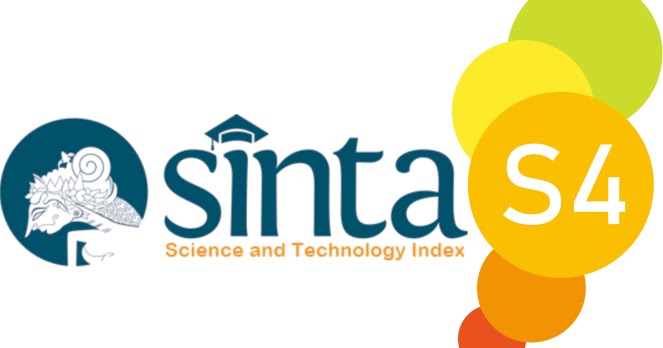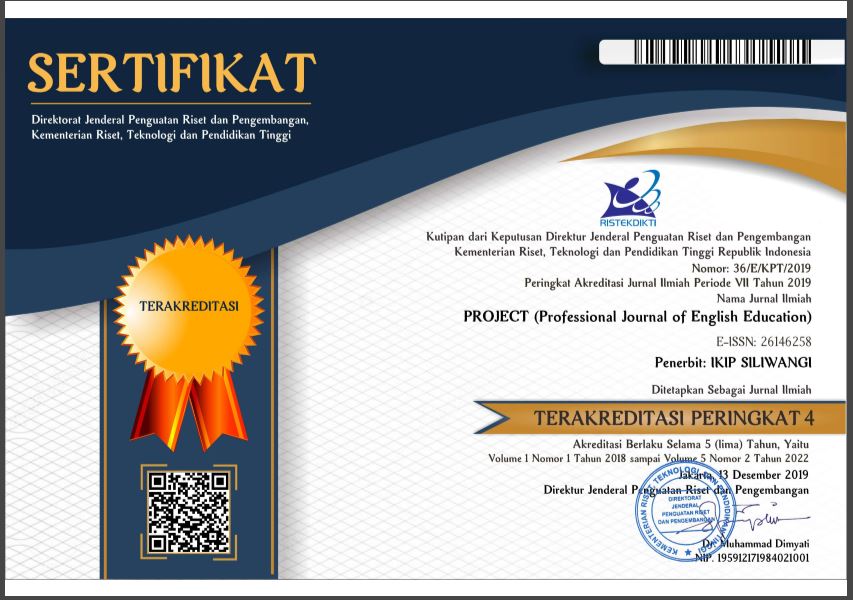Exploring Wordwall.Net Implementation in Vocabulary Learning at Junior High School
Abstract
This study explores the implementation of Wordwall.net in vocabulary learning for junior high school students. Vocabulary is fundamental in language acquisition, but traditional methods often fail to engage students, leading to poor outcomes. This research employs a qualitative case study approach to examine how Wordwall.net enhances vocabulary learning by making the process more interactive and enjoyable. Conducted in a junior high school in Karawang, the study involved four grade VIII students and used interviews, observations, and document analysis as data collection methods. The findings reveal that Wordwall.net significantly improves student engagement and vocabulary retention. Teachers played a crucial role in selecting appropriate activities, preparing lessons, and addressing challenges post-learning. Students responded positively to the platform, citing increased interaction, ease of use, and a more enjoyable learning experience. Despite its advantages, challenges remain, including the need for appropriate selection criteria and effective post-learning reinforcement. The study concludes that Wordwall.net is an effective tool in enhancing vocabulary learning, fostering a more dynamic and interactive classroom environment. Additionally, it highlights the importance of ongoing teacher support and training to maximize the platform's potential and address any limitations that may arise during its use, particularly in different educational contexts.
References
Ahmad, J. (2012). English language teaching (ELT) and integration of media technology. Procedia-Social and Behavioral Sciences, 47, 924-929.
Ari, D., Jacobs, L. C., Bazavieh, A., & Sorensen, C. (2010). Introduction To Research Education (8th Ed). Belmont: Thomson Wadsworth.
Baxter, P., & Jack, S. (2008). Qualitative case study methodology: Study design and implementation for novice researchers. The qualitative report, 13(4), 544-559.
Braun, V., & Clarke, V. (2006). Using thematic analysis in psychology. Qualitative research in psychology, 3(2), 77-101.
Bueno, M., Perez, F., Valerio, R., & Areola, E. M. Q. (2022). A usability study on Google Site and Wordwall. Net: Online instructional tools for learning basic integration amid pandemic. Journal of Global Business and Social Entrepreneurship (GBSE), 7(23), 24621714.
Çil, E. (2021). The effect of using Wordwall. net in increasing vocabulary knowledge of 5th Grade EFL students. Language Education and Technology, 1(1), 21-28.
Coady, J & Huckin, T. (1997). Bahasa kedua Akuisisi Kosakata: Alasan Pedagogi.Pers Universitas Cambridge.
Creswell, J. W. (2012). Educational research. Planning, conducting and evaluating Qualitative and quantitative research. Usa, Boston: Pearson Education Inc.,11.
Creswell, J. W. (2014). Research Design: Qualitative, Qualitative, and Mixed Methods Approaches. Sage Publication. Sage publication.
Denzin, N. K., & Lincoln, Y. S. (1996). Handbook of qualitative research. Journal of Leisure Research, 28(2), 132.
Henrichs, E. L. (2011). Interactive Word Walls and Student Perceptions of Vocabulary. San Marcos: Texas State University.
Jannah, M., & Syafryadin, S. (2022, July). EFL students' perspectives on the use of Wordwall. net as vocabulary learning media. In ELT Forum: Journal of English Language Teaching (Vol. 11, No. 2, pp. 115-124).
Kaharuddin, A. (2020). Word Wall Media: An Effective Teaching Technique to Enrich Students' Vocabulary in Secondary Level of Education. Kadaruddin, Arafah, B., Ahmad, D., Kaharuddin, Iska.(2020). Word Wall Media: An Effective Teaching Technique to Enrich Students' Vocabulary in Secondary Level of Education, International Journal of Advanced Science and Technology, 29(5), 13228-13242.
Kasim, N. A. 2013. Meningkatkan Penguasaan Kosakata Siswa dengan Menggunakan Media Word Wall. Jakarta: RinekaCipta. (Halaman: 20 – 22).
Kitao, S. K., & Kitao, K. (1996). Testing Vocabulary.
Lincoln, Y. S., & Guba, E. G. (1988). Criteria for Assessing Naturalistic Inquiries as Reports.
Mohinakhon, K., & Teacher, S. (2022). Effective ways of using word wall in primary education. Web of Scientist: International Scientific Research Journal, 3(5), 2776-0979.
Putri, F. M. (2020). Efektivitas Penggunaan Aplikasi Wordwall dalam Pembelajaran Daeing (Online) Matematika pada Materi Bilangan Cacah Kelas 1 di MIN 2 Kota Tangerang Selatan (Bachelor's thesis, Jakarta: FITK UIN Syarif Hidayatullah Jakarta).
Richards, J. C., & Renandya, W. A. (Eds.). (2002). Methodology in language teaching: An anthology of current practice. Cambridge university press.
Sari, P. M., & Yarza, H. N. (2021). Pelatihan penggunaan aplikasi Quizizz dan Wordwall pada pembelajaran IPA bagi guru-guru SDIT Al-Kahfi. SELAPARANG: Jurnal Pengabdian Masyarakat Berkemajuan, 4(2), 195-199.
Sawitri, I. G. A. L., Sudirman, S., & Paramartha, A. A. G. Y. (2019). The effect of word wall media on writing achievement of the seventh grade students of Smp Negeri 1 Seririt in academic year 2018/2019. Language and Education Journal Undiksha, 2(2), 43-51.
Susilaningrum, P., & Asri, S. (2023, November). Increasing English Vocabulary Through Wordwall Games for Grade 8 SMP Negeri 2 Semarang. In UNNES-TEFLIN National Conference (Vol. 5, pp. 553-573).
Syamsidar, S., Silalahi, R. M. P., Rusmardiana, A., Febriningsih, F., Taha, M., & Erniwati, E. (2023). Wordwall on mastery of vocabulary in English learning. Al-Ishlah: Jurnal Pendidikan, 15(2), 1801-1806.
Thomas, D. R. (2006). A general inductive approach for analyzing qualitative evaluation data. American journal of evaluation, 27(2), 237-246.
Thornburg. 2002. Belajar Bersama Sendirian, Kooperatif dan Individualisasi.Jersey baru. Aula Prentif
Thornburry Scott, How to Teach Vocabulary (Harlow: Longman Pearson Education Ltd, 2002)., 23
Tompkins, G. E. (1998). Language arts: Content and teaching strategies. Order Processing, Merrill, an imprint of Prentice Hall, PO Box 11071, Des Moines, IA 50336-1071.
Wagstaff, J. M. (1999). Teaching reading and writing with word walls. Scholastic Inc..
Wilkins, David, A. (1972). Wilkins, David A.1972 Linguistik dalam Pengajaran Bahasa. Cambridge, MA: MIT Pers.Cambridge, MA: MIT Pers, 111.
Yin, R. K. (2009). Case study research: Design and methods (Vol. 5). sage.
Downloads
Published
Issue
Section
License

This work is licensed under a Creative Commons Attribution-ShareAlike 4.0 International License.




